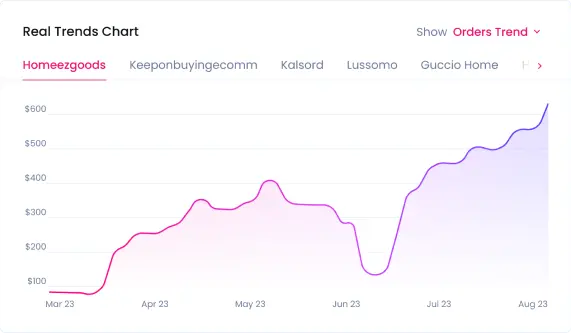Creating a Successful Dropshipping Business Plan: A Step-by-Step Guide
Contents

Like every other type of business model, developing a robust dropshipping business plan is essential if you want to find success in this highly competitive industry. Arming yourself with a detailed business plan before launching into the world of dropshipping not only gives you direction but also helps you figure out the right products to dropship to make the most profit.
Although it might seem overwhelming at first, creating a business plan for your online store is anything but hard. In this post, we will analyze the anatomy of a dropshipping business plan and show you how to create a detailed one easily and quickly. There is no need to hire a consultant or spend your entire day on YouTube trying to figure out how to create one.
But first, what is a dropshipping business plan?
Key Takeaways
- What is a dropshipping business plan
- Why do you need a dropshipping business plan
- What should you include in your dropshipping plan for optimal results
- How do you scale your dropshipping business after creating a business plan
- Conclusion
What is a Dropshipping Business Plan?
A dropshipping business plan is no different from a regular business plan. Think of it as a strategic roadmap that outlines how you intend to start, run, and grow your dropshipping business. It serves as a detailed document that covers every aspect of your business, from your niche selection to marketing strategies and financial projections.
It’s easy to overlook a business plan when planning to launch your dropshipping business because, after all, it won’t help you secure a payday loan or investment. Not like you need them anyway. Nonetheless, you will need it to clarify your business goals, anticipate challenges, and create a strategy for building a profitable business model.
Why Do You Need a Dropshipping Business Plan?
As we said earlier, it’s easy to consider a dropshipping business plan only as an afterthought when working on launching your dropshipping business. But this can be a disastrous mistake. If for nothing else, you might feel completely lost in the complex world of dropshipping, and eventually quit after some endless struggles.
You definitely wouldn’t want that to happen. With that being said, here are some solid reasons why you need a solid, well-thought-out dropshipping business plan:
1. Provides Clarity and Direction
A business plan is like a roadmap for your dropshipping venture. It outlines your vision, sets goals, and lays out the steps to achieve them. Without this kind of structure, it’s easy to get distracted by trends or lose sight of your original objectives.
This is where a detailed business plan comes into play. It provides you with clarity into the following:
- What niche you’ll focus on: Instead of jumping from one product trend to the next, a business plan helps you stay focused on a well-researched and chosen niche, which increases the chances of long-term profitability.
- Who your target audience is: Understanding your ideal customers helps you tailor your marketing and product selection to meet their needs, ensuring higher conversion rates.
- How you’ll position your business: Your plan helps define your unique selling proposition (USP), ensuring you stand out in a crowded market.
By providing clarity, a business plan keeps you grounded and prevents you from making impulsive, potentially costly decisions.
2. Helps You Anticipate Challenges
Although easy to set up, dropshipping is riddled with lots of challenges. From quality control issues to lengthy shipping challenges, it’s a never-ending stream of challenges. Arming yourself with a business plan from the get-go can help you identify these challenges from the onset and prepare accordingly.
A dropshipping business plan forces you to consider these potential problems before they arise:
- Supplier issues: What will you do if your supplier runs out of stock or has a delay in shipping? Your plan should address how to manage these risks by diversifying suppliers or setting clear customer expectations.
- Shipping delays: Dropshipping often involves long shipping times, especially when working with suppliers overseas. Planning how you’ll handle customer complaints or offer faster shipping alternatives can help you avoid negative reviews.
- Product quality control: Since you won’t be handling the products yourself, you’ll need to vet suppliers carefully to avoid poor product quality. Including supplier standards and inspection processes in your plan can help ensure you provide a good customer experience.
By identifying potential challenges ahead of time, your business plan allows you to prepare solutions and minimize disruptions.
3. Guides Your Financial Planning

It’s easy to fall into the trap of thinking you don’t have to plan your finances upfront before delving into dropshipping. But that can turn out to be a fatal mistake because if you don’t, you might run into serious cash flow problems that can ground your business to a halt.
This is another area where a business plan comes into play. A business plan forces you to think through the following financial considerations:
- Startup costs: Even in dropshipping, there are initial costs, including e-commerce platform fees, domain registration, marketing, and product sourcing. Your plan helps ensure you budget for these expenses properly.
- Profit margins: How much profit do you want to make on each product? Calculating your margins ahead of time helps you price your products competitively while still making a profit.
- Cash flow management: Since dropshipping businesses often require you to pay suppliers before receiving payments from customers, managing cash flow is critical. A financial plan helps ensure you have enough working capital to keep operations running smoothly.
Your business plan acts as a guide to maintaining a healthy balance between revenue and expenses, giving you a clear picture of your financial health and how to scale over time.
4. Keeps You Focused on Your Marketing Strategy
Even the best dropshipping business won’t succeed without effective marketing. A business plan ensures you have a clear marketing strategy in place to attract customers and grow your brand.
- Marketing channels: Will you rely on social media, SEO, content marketing, paid ads, or influencer partnerships to drive traffic? Your business plan outlines the channels most relevant to your target audience and products.
- Customer acquisition strategy: How much are you willing to spend to acquire a customer? Understanding your customer acquisition costs (CAC) is critical to running profitable ad campaigns, and a business plan helps you set these parameters.
- Retention tactics: Converting first-time visitors into loyal customers is much cheaper than acquiring new ones. Your business plan should outline your approach to customer retention, whether it’s through email marketing, loyalty programs, or retargeting.
A well-defined marketing strategy gives you the tools to bring in traffic and convert visitors into paying customers.
5. Aids in Decision Making and Growth
Your dropshipping business will inevitably grow and evolve. Whether you expand your product offerings, enter new markets, or scale your operations, having a business plan allows you to make informed decisions based on data and goals rather than on guesswork.
As you track your business’s progress, your plan serves as a reference point for making strategic adjustments:
- Scaling your business: Are you ready to add new products or suppliers? Having a plan ensures you scale thoughtfully and manage increased demand without sacrificing quality or customer service.
- Diversifying marketing: As your business grows, you may decide to explore new marketing channels. A business plan allows you to measure the effectiveness of your current strategies before expanding to others.
- Setting realistic goals: Your business plan provides a benchmark for measuring success, allowing you to set realistic and achievable goals based on your performance.
By helping you make data-driven decisions, your business plan supports sustainable growth and long-term success.
6. Essential for Securing Funding or Partnerships
While many dropshipping businesses start small, there may come a time when you want to scale faster, take on investment, or enter into partnerships. A business plan becomes crucial in these scenarios, as it demonstrates to potential investors or partners that you’ve thought through your business model, financials, and growth strategy.
A solid business plan:
- Shows professionalism: Investors and partners want to see that you’re serious about your business and have a plan for success.
- Clarifies your vision: A business plan explains your goals, target market, and competitive advantage, helping others see the potential of your business.
- Outlines financial projections: Investors are particularly interested in your financials—how much money you need, how you’ll use it, and what return they can expect. Your business plan provides these critical details.
Even if you don’t plan to seek funding now, having a business plan ready positions you to take advantage of future opportunities.
What Should You Include in a Business Plan?
At this point, you might be wondering what you should include in your drop shipping business plan – and what you should leave out. The truth is, there are no fast and hard rules when it comes to crafting a business plan. More often than not, the content of the business plan – as well as the length – largely depends on your intent.
If you just want to use it as a blueprint to accurately navigate the rather complex world of dropshipping, you can keep it brief, only including key details. But if you want to use it for fund-raising purposes, you might have to develop a comprehensive dropshipping business plan, going as in-depth as possible.
Okay, enough of the talking already: let’s get into what you should ideally include in your dropshipping business plan.
1. Executive Summary
The Executive Summary is the first section of your business plan, although you might choose to add it at the tail end of your business plan. This section provides a high-level overview of your entire business plan and should capture the most important details of your business. It’s meant to grab the reader’s attention and give them a snapshot of what your business is all about.
In your Executive Summary, include:
- A brief description of your business concept (what you sell and who your customers are)
- Your business goals and vision
- A summary of your products or services
- Your target market
- Key financial projections
- The competitive advantage of your business
Even though it’s short, the Executive Summary is one of the most important sections, especially if you’re seeking investors. It sets the tone for the rest of the plan and provides a quick insight into your business.
2. Company Description
This is where you provide a comprehensive description of your business. Ideally, it should provide details on the following:
- Your company’s mission and vision: What is the purpose of your business, and what impact do you hope to have in the market or industry?
- Business structure: Are you operating as a sole proprietor, an LLC, a corporation, or another structure?
- Location: Where is your business located, or is it an online-only venture?
- History: If applicable, provide a brief history of your business, including milestones or achievements.
- What makes you unique: Explain your competitive advantage and what sets your business apart from others in the market.
The Company Description gives readers a clear picture of your business’s identity and purpose.
3. Market Analysis
If you are looking to pitch your business to potential investors, you need to prove to them that you’ve done some background research. This is where the market research and analysis section comes in handy. It is a crucial section because it shows that you’ve thoroughly researched your industry, target audience, and competitors. It should include:
- Industry overview: A broad view of your industry, its trends, and potential growth.
- Target market: Who are your ideal customers? Define your audience based on demographics, interests, buying behavior, and needs.
- Market need: What problem are you solving for your target customers, and why is there demand for your product or service?
- Competitive analysis: Identify your main competitors, their strengths and weaknesses, and how you plan to differentiate yourself.
By conducting thorough market research, you demonstrate that your business is positioned to thrive in a competitive landscape.
4. Customer Demographics
It’s important to give some thought to your ideal target customers. If you don’t have a good idea of who your ideal customers are, your marketing campaign can be a total dud. Worse, you can get lost in the sea of market competition and struggle to make
Typical demographic data includes:
- Age: Different age groups have varying preferences and behaviors.
- Gender: Helps tailor messaging and product selection.
- Income: Influences spending habits and purchasing power.
- Education: Affects decision-making processes and brand preferences.
- Location: Regional differences can shape demand and marketing strategies.
- Occupation: A customer’s job can offer insights into lifestyle and needs.
5. Products
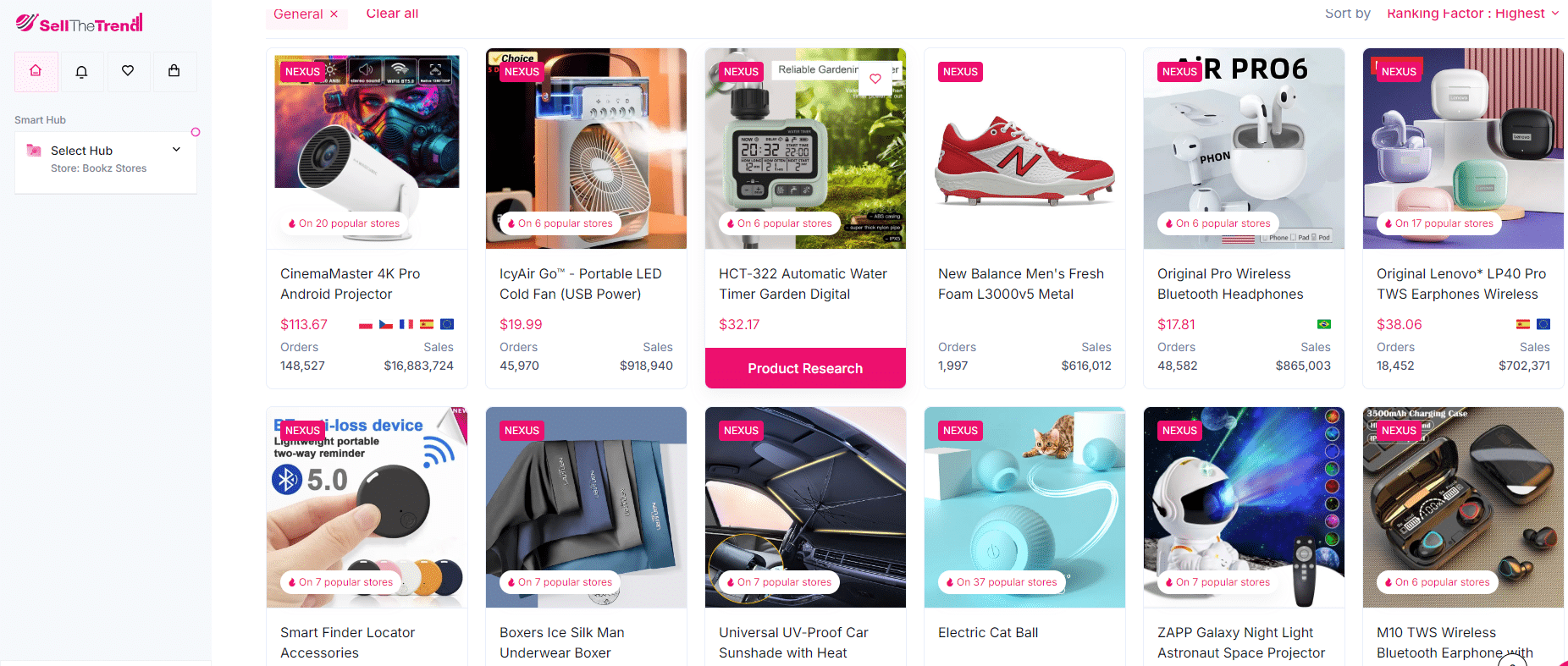
The Products section should explain what products you have in mind to dropship. Of course, it should match your customer demographics. What’s the point of selling handbags when your target customers are young males with a strong interest in video gaming?
Getting the idea? Even though it’s true you might switch to a different product niche as your business evolves, it’s still important to include your target products in your business plan. If nothing else, it can help keep an accurate track of your dropshipping business as it evolves.
6. Marketing and Sales Strategy
Your marketing and sales strategy is a critical component of your business plan. Without a solid marketing strategy, you’d struggle to get your dropshipping business off the ground. So you should also include it in your business plan. This section outlines how you plan to attract and retain customers, as well as your sales process. Include:
- Marketing plan: Detail the marketing channels you’ll use to reach your audience (social media, search engine optimization, email marketing, paid ads, etc.) and how you will build brand awareness.
- Sales strategy: Explain how you will sell your products or services—whether it’s through an online store, direct sales, or retail partners.
- Customer acquisition: Describe your customer acquisition strategy and how you’ll convert leads into paying customers.
- Customer retention: Include strategies for keeping customers engaged, such as loyalty programs, email newsletters, or after-sales support.
By outlining a clear marketing and sales plan, you show how you will generate revenue and grow your customer base.
7. Financial Plan and Projections
Even though dropshipping doesn’t require so much upfront financial investment, you will need to plan your finances and project your revenue. Doing so helps you prepare buffers to absorb the financial shocks you might experience while running your business.
The truth is that dropshipping can sometimes be an expensive venture, even though it is easy to start. One sure way to thrive in it is to have a solid financial plan, as it helps prepare you for the uncertainties of tomorrow.
8. Funding Requirements (if applicable)
Dropshipping might look like it’s easy and cheap to run, but it isn’t. It can cost you your entire life savings, especially when you consider how much you will spend on ads and marketing. So, if you have the chance to get funding, we’d suggest you go for it.
But to secure that funding, you will likely have to provide a business plan with a comprehensive funding requirement. Be sure to include this part when crafting a plan for your dropshipping business idea.
A Step-by-Step Guide to Creating a Dropshipping Business Plan
Now that you know why a business plan is important for your dropshipping business and what it should contain, it’s about time we showed you how to create one step-by-step.
1. Define Your Business Niche
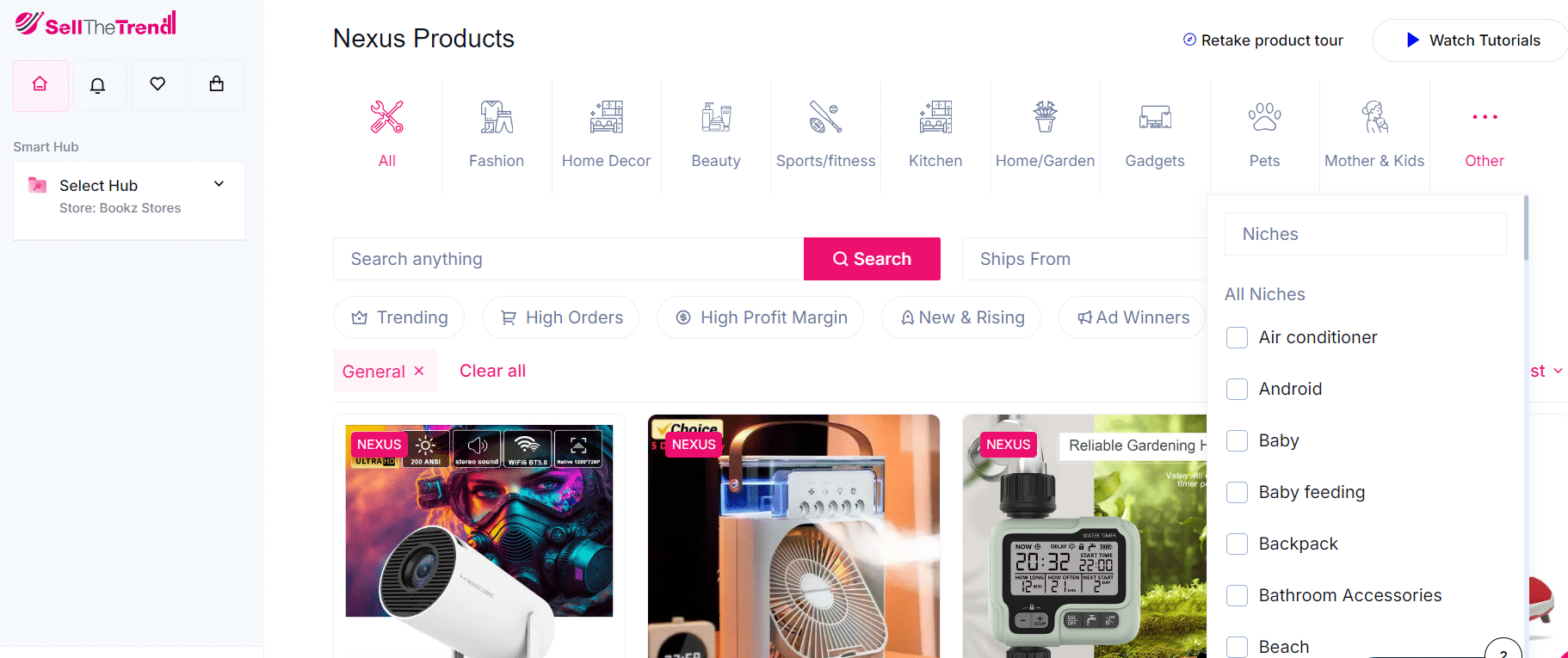
The first step in creating a dropshipping business plan is to define your niche. A niche is a specific segment of the market that you will focus on, allowing you to cater to a particular group of customers with specific needs.
Instead of trying to sell everything to everyone, narrowing your focus to a niche will help you stand out and build a loyal customer base. It can also help you optimize your limited resources for better results.
Here are some key questions to ask yourself when deciding on the niche to focus on:
- What are your interests or areas of expertise?
- What product categories are trending or growing in popularity?
- Who is your target audience, and what are their needs and preferences?
Example: If you are passionate about fitness, you might focus on a niche like eco-friendly fitness gear, offering products like yoga mats, resistance bands, and workout apparel made from sustainable materials.
Of course, your area of passion shouldn’t be the only pointer to rely on when deciding on a niche to pick. Keep your options open!
2. Conduct Market Research
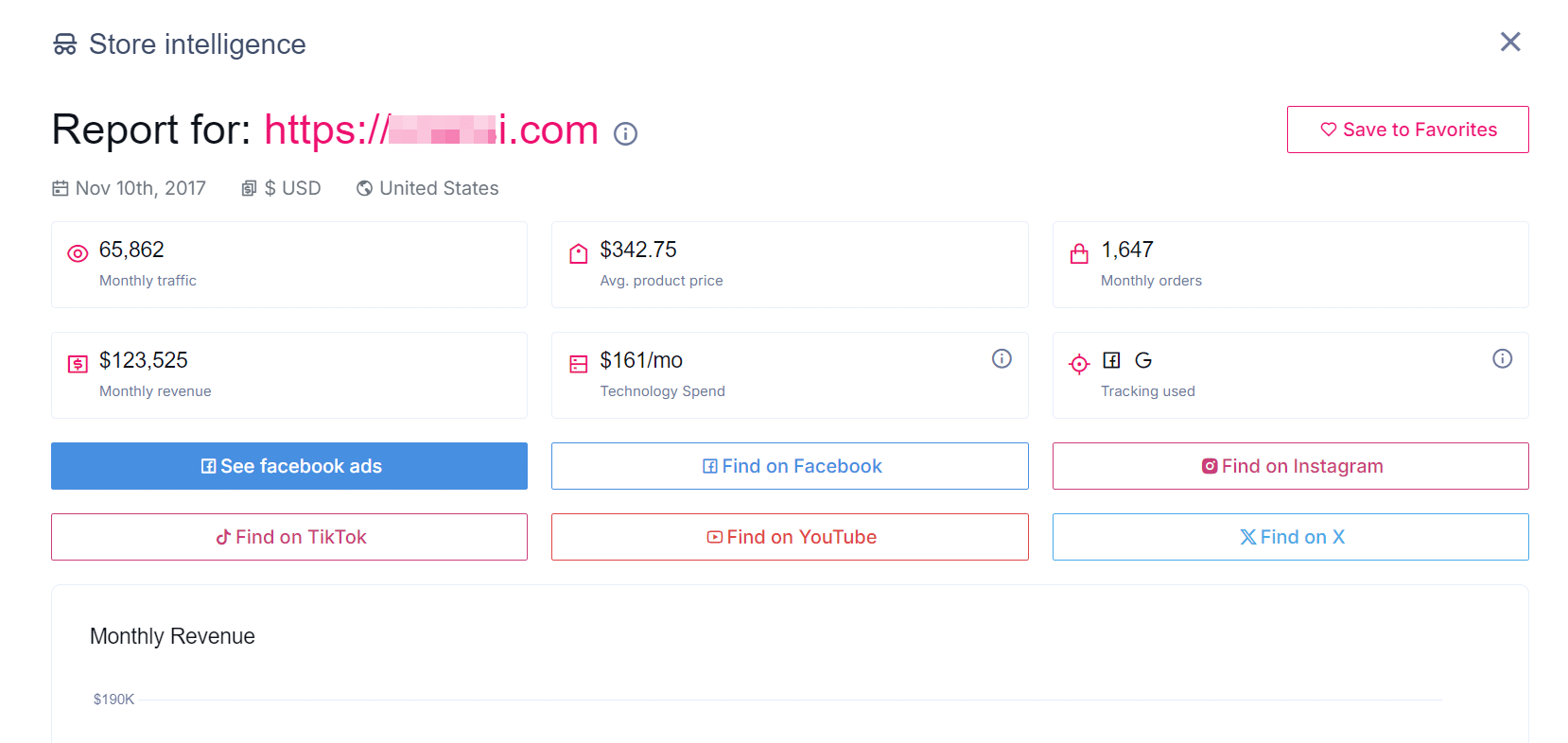
Once you’ve defined your niche, it’s time to conduct thorough market research. This step helps you understand the demand for your products, analyze your competitors, and identify opportunities in the market. Market research will also help you set realistic expectations and ensure there is sufficient demand for your products.
Key areas to research:
- Target Audience: Understand the demographics, preferences, and shopping habits of your ideal customers.
- Competitors: Analyze other dropshipping stores in your niche to see what products they offer, their marketing strategies, and their strengths and weaknesses.
- Market Demand: Use tools like Google Trends, Amazon, and eBay to research the demand for your products. Identify keywords and search trends related to your niche.
There are a couple of tools you can use for this purpose. One is Google Trends, which gives you insights into the trendiness of a particular product over a given period. Another tool is Google Keyword Planners, which helps you see how many people are searching for the products you have in mind to dropship.
3. Choose Your Dropshipping Products
Selecting the right products is critical to the success of your dropshipping business. You’ll naturally want to go for products that are high in demand, have a good profit margin, and align with your target niche.
Other factors to consider when choosing your dropshipping products are as follows:
- Profit Margin: Look for products that offer a healthy profit margin after factoring in the cost of goods, shipping, and marketing.
- Shipping Costs: Lightweight products with low shipping costs are ideal for dropshipping.
- Product Quality: Ensure that the products you choose are of good quality. Sourcing quality products can prevent customer complaints and returns.
- Availability and Supply: Choose products with a reliable supply to avoid stock shortages and fulfillment delays.
4. Select Your Dropshipping Suppliers
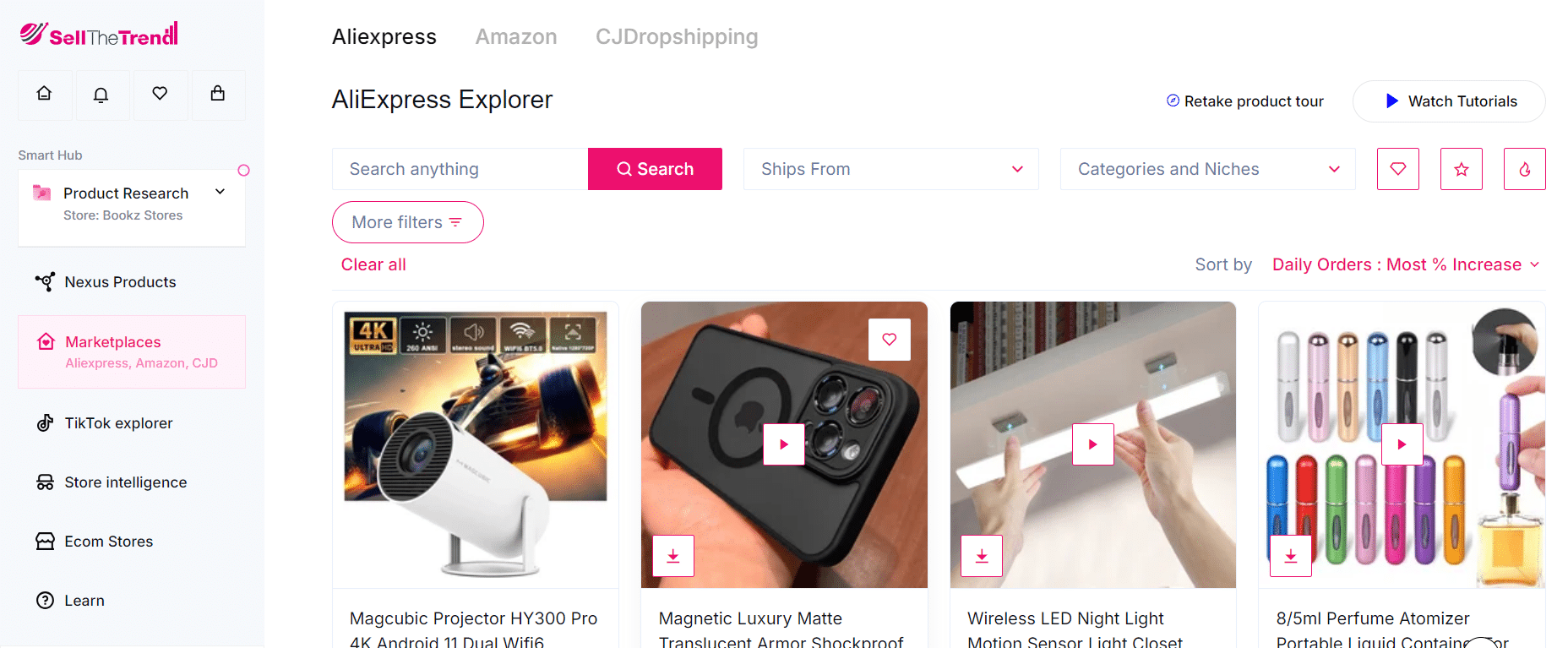
Your suppliers play a crucial role in your business. As a matter of fact, the success, albeit the failure, of your dropshipping business largely relies on your choice of dropshipping suppliers. This is because they handle inventory, fulfillment, and shipping, so it’s important to partner with reliable and trustworthy suppliers.
Here are 4 variables to take into consideration when selecting a dropshipping supplier:
- Product Quality: Order samples to evaluate the quality of the products.
- Shipping Time: Choose suppliers with fast and reliable shipping, especially if you’re targeting customers in specific regions.
- Communication: A supplier should be easy to reach and respond quickly to your queries.
- Reputation: Look for suppliers with positive reviews and a good reputation in the industry.
Where to find suppliers:
- AliExpress: One of the most popular platforms for dropshipping suppliers, especially for beginners.
- Oberlo: Integrated with Shopify, offering access to a variety of suppliers.
- Spocket: Focuses on suppliers from the U.S. and Europe for faster shipping times.
- SaleHoo: A directory of verified wholesale suppliers.
5. Create a Brand Identity
When working on your business plan, you have to put thoughts into your brand identity. Your brand identity defines how customers perceive your business. It includes everything from your business name and logo to your brand’s tone and messaging. Creating a strong brand identity helps differentiate your business from competitors and builds trust with your audience.
Elements of your brand identity:
- Business Name: Choose a name that reflects your niche and is easy to remember.
- Logo and Branding: Design a logo and visual branding that aligns with your target audience and niche.
- Brand Story: Develop a compelling brand story that resonates with your audience. Why did you start this business? What makes your products unique?
- Tone and Voice: Determine how you want to communicate with your customers. Are you professional, playful, or inspiring?
We suggest you include all these in your business plan to make it more comprehensive
6. Set Up Your Dropshipping Store
Now it’s time to create your online store. You have two broad choices: build a custom website from scratch or leverage established platforms like Sell The Trend’s SellShop, an easy-to-use website builder that lets you set up an online storefront quickly and easily.
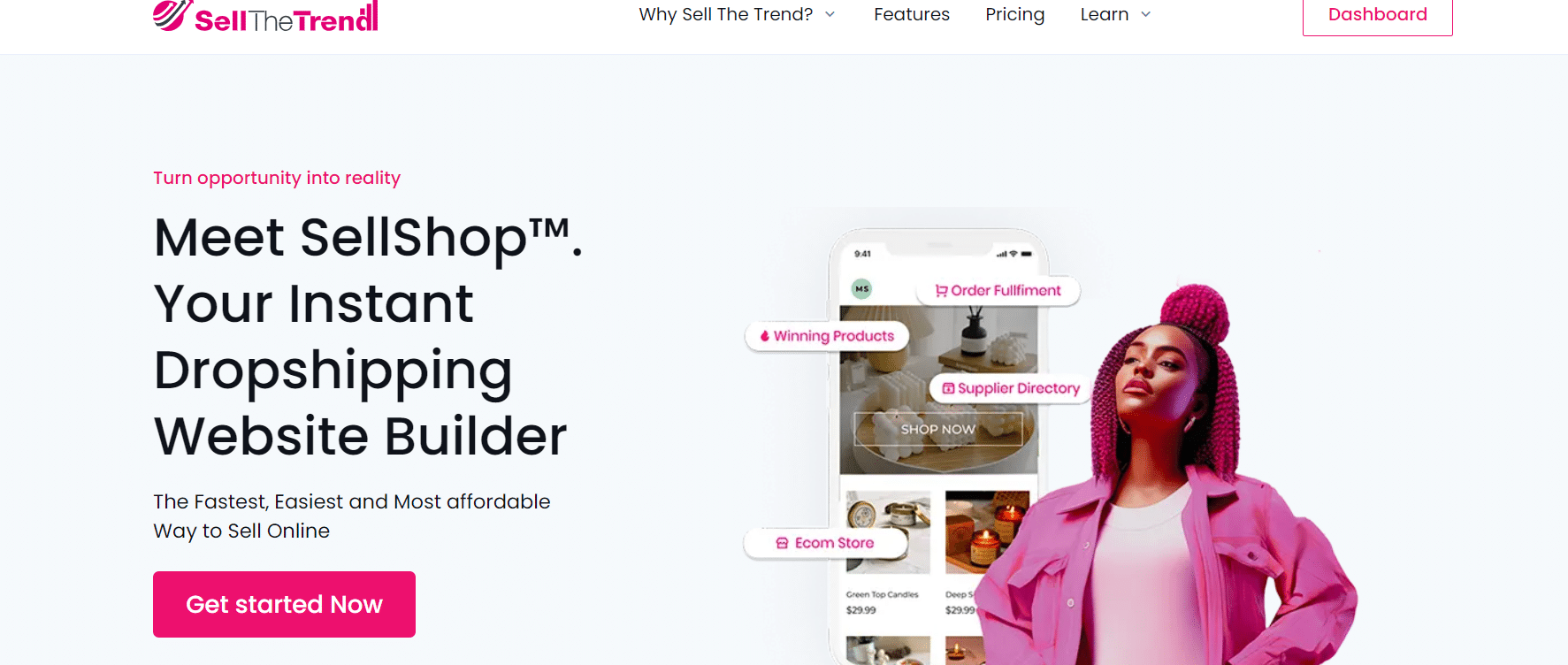
Steps to setting up your store:
- Choose a Platform: Sell The Trend is a popular option due to its ease of use, offers one-click product push, and syncs with Aliexpress and CJDropshipping.
- Design Your Store: Choose a theme that reflects your brand identity and makes it easy for customers to navigate. Focus on clean design and a mobile-friendly layout.
- Add Products: List the products you selected earlier, including high-quality images, detailed descriptions, and pricing.
- Import Products Into Your Store: Sell The Trend makes this very easy.
7. Develop a Marketing Strategy
A strong marketing strategy is essential for driving traffic to your store and generating sales. Your business plan should outline your marketing approach, including how you plan to attract and convert customers.
Key marketing channels:
- Social Media Marketing: Platforms like Instagram, Pinterest, and TikTok are ideal for promoting visually appealing products like fashion or home decor.
- Influencer Marketing: Partner with influencers in your niche to reach a broader audience and build brand awareness.
- Content Marketing and SEO: Write blog posts, create videos, or develop guides that provide value to your audience. Optimizing your content for search engines can help attract organic traffic.
- Paid Advertising: Use Facebook Ads, Google Ads, or Pinterest Ads to target specific audiences and drive traffic to your store.
Example: If you’re dropshipping fitness gear, you could partner with fitness influencers on Instagram or TikTok to showcase your products and offer discount codes to their followers.
8. Set Financial Goals and Budget
Establishing clear financial goals and a budget is essential for tracking the success of your dropshipping business. This includes estimating your initial startup costs, ongoing expenses, and revenue projections.
Consider the following expenses:
- Platform and App Fees: Costs associated with using e-commerce platforms like Shopify and dropshipping apps.
- Product Costs: The cost of goods sold (COGS) from suppliers.
- Marketing Costs: Budget for advertising campaigns, social media promotions, and influencer partnerships.
- Operational Costs: Domain registration, website hosting, and transaction fees.
Example: Set a monthly revenue goal of $5,000 with a marketing budget of $1,000 for social media ads and influencer collaborations to drive sales.
9. Plan for Customer Service and Returns
Customer satisfaction is key to building a successful dropshipping business. Your business plan should include strategies for providing excellent customer service and handling returns and refunds.
Customer service tips:
- Create a FAQ Page: Address common customer questions to reduce inquiries. You can also embed links to your FAQ or return portal into physical deliveries using The QR Code Generator, streamlining the customer support process and reducing friction.
- Offer Multiple Contact Methods: Provide email support, live chat, or a contact form.
- Develop a Return Policy: Clearly outline your return and refund policies on your website to manage customer expectations.
Example: For a fashion accessories store, you could offer a 30-day return policy for defective items and ensure customers can easily contact your support team through live chat or email.
10. Monitor and Adjust Your Plan
Once your dropshipping business is up and running, it’s essential to monitor your progress and adjust your plan as needed. Track your sales, website traffic, conversion rates, and customer feedback to identify areas for improvement. Regularly reviewing your business plan ensures that you stay on track and adapt to market changes.
Key metrics to track:
- Sales and Revenue: Measure your monthly revenue and sales growth.
- Customer Acquisition Costs: Track how much you’re spending to acquire each customer through ads or other marketing efforts.
- Conversion Rate: Monitor how many visitors to your site are converting into paying customers.
- Customer Feedback: Use reviews and feedback to improve product offerings and customer service.
How to Scale Your Dropshipping Business
If all went well after crafting your business plan, chances are you’ve successfully launched your dropshipping business. The question now is, what’s next? We bet you know the answer: get your first sale and scale your business.
Unfortunately, this is the hardest part of being a business owner trying to succeed with dropshipping. Getting that first sales and scaling your business is not a walk in the park – it takes a lot of grind. Nonetheless, it’s very doable if you follow the steps listed below:
1. Optimize Your Processes
Before focusing on growth, ensure your existing operations are running smoothly. Without a well-optimized business process, you will struggle real hard to grow your business.
What exactly do we mean by optimizing your process? Here are a few takeaways:
- Streamlining order fulfilment: You will want to ensure customers’ orders are shipped as quickly and accurately as possible. For this to happen, you need to partner with a reliable supplier.
- Improving customer service: Scaling often leads to more customer inquiries. You have to be on available to provide customers with instant answers to their inquiries, via chats, emails, or phone calls.
2. Diversify Your Product Range
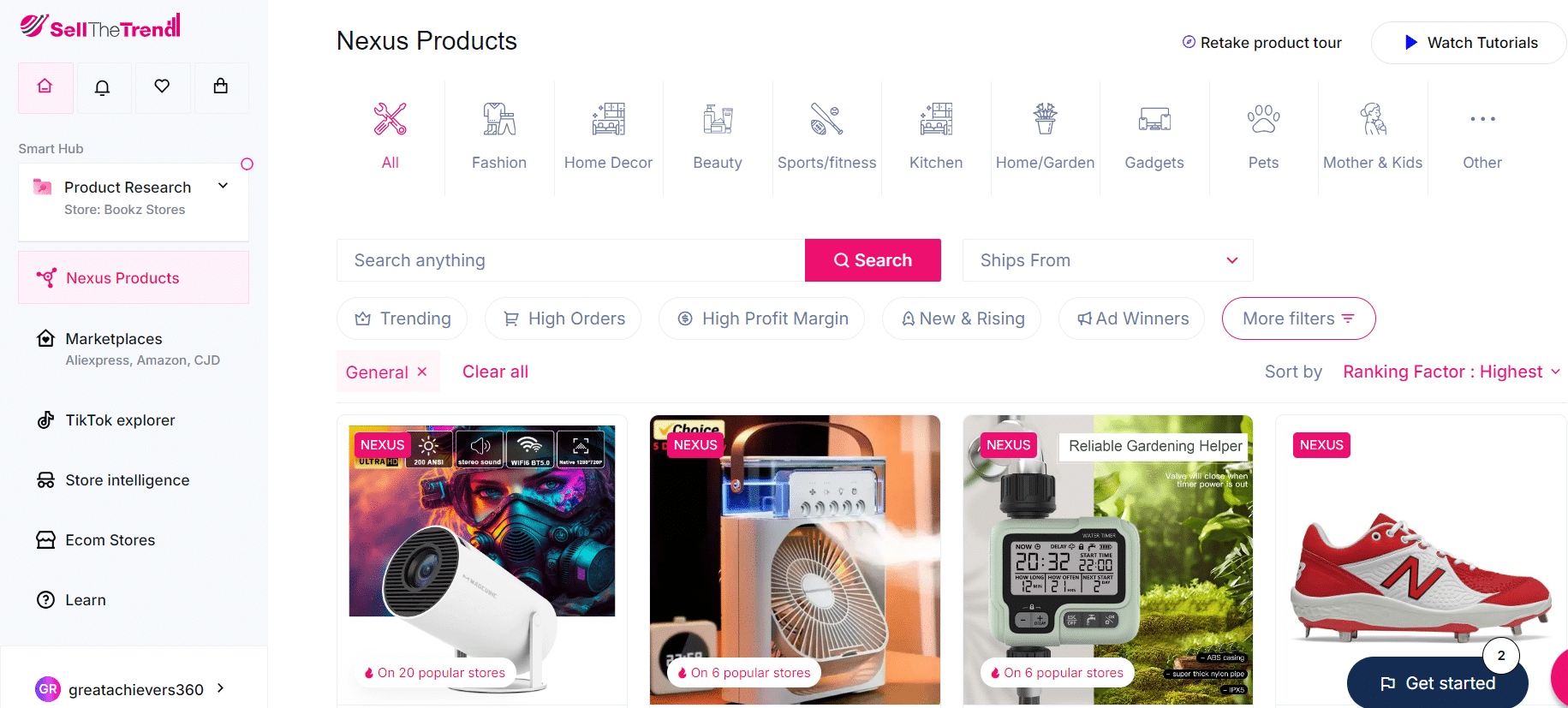
When you start a dropshipping business, you will likely start with one or two products. But as your business begins to scale, the need to diversify your product range will certainly arise. Adding new products within your niche gives customers more options and increases the potential for higher sales.
- Add complementary products: Introduce items that complement your best sellers. For example, if you’re selling fitness equipment, consider adding supplements or workout accessories.
- Explore new niches: Once you’ve established a foothold in your original niche, explore related niches to reach new customers.
- Work with additional suppliers: Having multiple suppliers allows you to expand your product range and reduces the risk of relying on a single source.
Ensure any new products align with your brand and customer needs to maintain consistency and trust.
3. Invest in Marketing
Scaling requires more visibility and traffic, and this means ramping up your marketing efforts. Consider diversifying your marketing strategy:
- Paid advertising: If you’re already using platforms like Google Ads or Facebook Ads, increase your budget for proven campaigns. Test new ad creatives and target broader audiences.
- Social media marketing: Expand your presence on several social media platforms like Instagram, TikTok, and Pinterest to reach a wider audience. Use influencer marketing or partnerships to boost visibility.
- Email marketing: Build and nurture an email list. You can do this by offering customers freebies like discounts, free shipping, and product samples. Anything strong enough to entice them to give away their emails will do the trick. You can take a step further by leveraging email marketing tools to create email sequences for cart abandonment, product recommendations, and promotions to increase conversions. Using a QR creator, you can also generate scannable codes for sign-ups, making it even easier for potential customers to join your email list.
- Search engine optimization (SEO): Invest in SEO to improve your website’s ranking on Google. This will drive organic traffic, reducing your reliance on paid ads.
A strong marketing strategy is essential for scaling your business by driving consistent, high-quality traffic to your store.
4. Focus on Customer Retention
Acquiring new customers is important, but retaining your existing ones is even more valuable. Repeat customers are more likely to make larger purchases and refer others to your store.
Here are some tried-and-true tactics you can use to Implement these strategies to boost customer retention:
- Loyalty programs: Offer rewards for repeat purchases, such as discounts, points, or exclusive offers.
- Personalized marketing: Use customer data to send personalized emails and recommendations, making customers feel valued and encouraging them to return.
- Excellent post-purchase experience: Follow up with customers after their purchase to ensure satisfaction and ask for feedback. A smooth, positive experience builds loyalty.
By focusing on retention, you’ll increase the lifetime value of your customers and build a stronger brand.
5. Automate Where Possible
There is only so much you can do within 24 hours – repetitive, time-consuming tasks shouldn’t be part of it. Instead, automate, automate, automate!
Automate every task that can be automated. This will free you the time to focus on better activities that impact your bottom line, like marketing, managing supplier communications, etc.
Thankfully, with Sell The Trend, you can effortlessly automate most of your dropshipping processes, including order fulfilment, product listing, inventory syncing and many more.
6. Expand to New Markets
Once your business is stable in your primary market, consider expanding internationally to reach a larger audience. Here’s how to approach it:
- Support more languages: Tailor your website for international markets by offering multiple languages and currencies. Ensure your payment gateways support global transactions.
- Adapt marketing strategies: Different markets have different consumer behaviors and preferences. Research your new market thoroughly and adapt your marketing to local trends and cultural nuances.
- Work with local suppliers: Consider partnering with local suppliers in new regions to reduce shipping times and provide a better customer experience.
Expanding to new markets helps you tap into a broader customer base, driving more sales.
7. Analyze Data and Improve Continuously
Like every other online business, you have to keep adapting to changing trends and improving your processes to stay in business. Achieving this will require regular tracking of your performance and continuous data analysis to gain deep insights into your industry.
FAQs
How do I write a business plan for dropshipping?
Writing a dropshipping business plan is anything but rocket science. It begins with knowing who your target audience is, having a fair idea of your marketing strategy, and knowing what products you plan to sell. You can then craft your business plan around these details.
How much do I need to start a dropshipping business?
The long and short answer is, it depends. You can start a dropshipping business with literally $0, and still scale it. You could still start with $10,000 and won’t go so far. To this end, we’d say start with whatever you have.
How profitable is dropshipping?
Dropshipping can be insanely profitable if you get into the right niche and get your marketing right. You just need to be patient enough to grow it until it becomes profitable.
Can I start dropshipping with $100?
Yes, you can. To increase your chances for success, invest a good portion of that money in marketing.
Is dropshipping worth it for beginners?
Dropshipping is definitely worth it for beginners. If you are one, you will need a large dose of patience to see tangible success.
Conclusion
Although it might not look like much, a business plan is a vital necessity when you are setting up your dropshipping business. Not only does it provide you with direction to navigate the complex world of dropshipping, but can help you secure critical funds at the onset of your business.
Creating one isn’t hard – you just have to follow the steps we’ve outlined in this guide.



